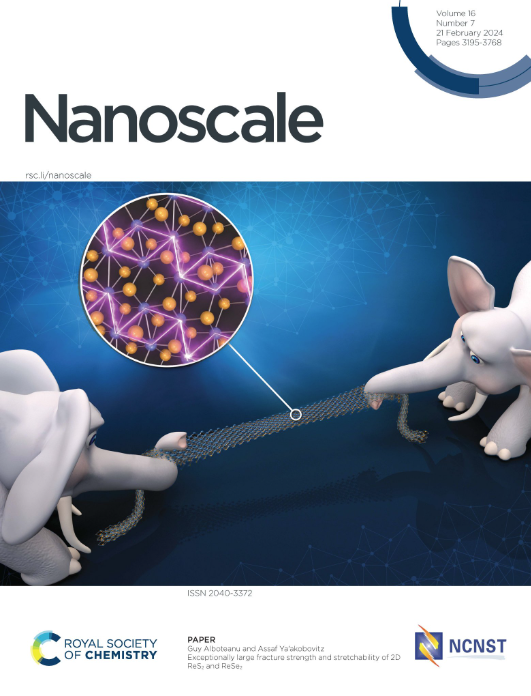Enhancement of the piezoelectric response of ZnO nanowires grown by PLI-MOCVD using post-deposition treatments through adjusted screening and surface effects
IF 5.8
3区 材料科学
Q1 CHEMISTRY, MULTIDISCIPLINARY
引用次数: 0
Abstract
As a biocompatible and non-critical material, ZnO, specifically in its nanowire morphology, holds great promise to be integrated into highly efficient mechanical energy transducers. However, the control of the density of free charge carriers driving the screening effect of the piezoelectric potential under mechanical solicitations is critical for enhancing their piezoelectric properties. To that extent, the effects of several post-deposition treatments, including oxygen plasma, UV ozone, and thermal annealing under oxygen atmosphere, on the properties of ZnO nanowires grown by pulsed-liquid injection metal-organic chemical vapor deposition are thoroughly investigated and compared. The thermal annealing at high temperature shows its predominance over the other post-deposition treatment for the decrease in the density of free electrons, roughly estimated from 1.8 ‒ 3.3 x 1018 to about 1017 cm-3, the removal of carbon contamination inside the structure, and the crystallinity improvement. By proceeding with the thermal annealing and increasing its temperature from 700 to 900 °C, time-resolved cathodoluminescence measurements further reveals the decrease in the density of surface traps from 7.7 to 3.0 x 1012 cm-2 due to an increase in the amount of oxygen vacancies at the surfaces of ZnO nanowires. The effective piezoelectric coefficient d33eff as measured by piezo-response force microscopy eventually shows a significant enhancement of 47 %, from 4.5 to 6.6 pm/V, as the annealing temperature and duration are increased. These findings reveal the trade-off to optimize when using the post-deposition treatments, as supported by finite element method simulations, which show that the reduction of both the densities of free electrons and of surface traps act in an opposite manner on the piezoelectric response of ZnO nanowires.求助全文
约1分钟内获得全文
求助全文
来源期刊

Nanoscale
CHEMISTRY, MULTIDISCIPLINARY-NANOSCIENCE & NANOTECHNOLOGY
CiteScore
12.10
自引率
3.00%
发文量
1628
审稿时长
1.6 months
期刊介绍:
Nanoscale is a high-impact international journal, publishing high-quality research across nanoscience and nanotechnology. Nanoscale publishes a full mix of research articles on experimental and theoretical work, including reviews, communications, and full papers.Highly interdisciplinary, this journal appeals to scientists, researchers and professionals interested in nanoscience and nanotechnology, quantum materials and quantum technology, including the areas of physics, chemistry, biology, medicine, materials, energy/environment, information technology, detection science, healthcare and drug discovery, and electronics.
 求助内容:
求助内容: 应助结果提醒方式:
应助结果提醒方式:


